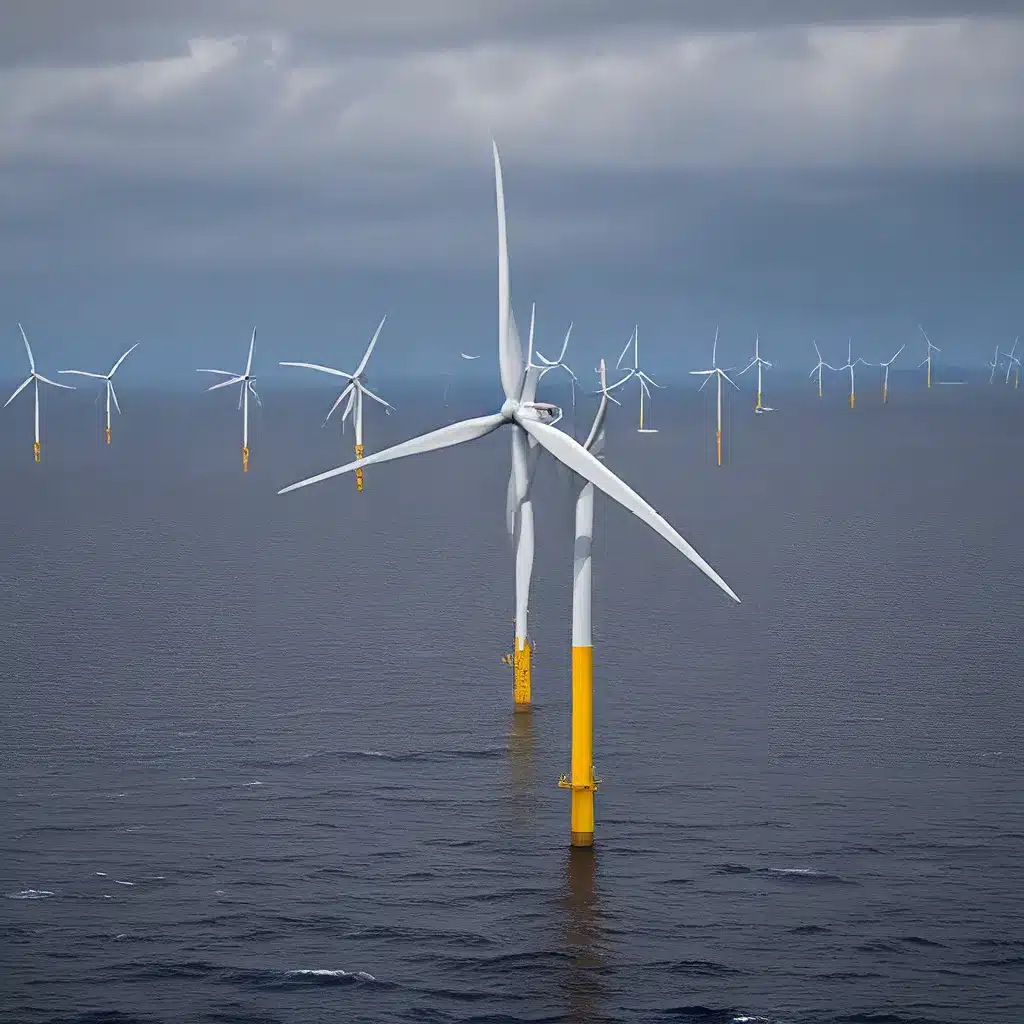
In the ever-evolving world of renewable energy, a new frontier has emerged – floating wind farms. These innovative offshore wind structures are poised to revolutionize the way we harness the immense power of the seas, unlocking vast untapped potential for clean energy generation.
Unlocking the Deep-Water Potential
As the global demand for sustainable energy solutions continues to soar, the conventional fixed-foundation offshore wind turbines have played a pivotal role. However, their reliance on shallow continental shelves has limited their reach. That’s where floating wind farms come in – they’re breaking down these geographical barriers and opening up a whole new realm of possibilities.
According to the experts at MHI Vestas Offshore Wind, the “tipping point” for floating foundations over fixed ones is around 60 meters of water depth. But these innovative platforms can be installed in waters as deep as 1,000 meters, unlocking a vast untapped market. Regions like the US West Coast, Japan, and Portugal, which have limited shallow-water areas, are prime candidates for this cutting-edge technology.
Just imagine the potential – by venturing into the deep, these floating wind farms can harness the stronger and more reliable marine wind speeds found further out at sea. It’s a game-changer that could propel the renewable energy industry to unprecedented heights.
The Floating Wind Revolution
The journey to conquer the offshore frontier has been steadily gaining momentum over the past decade. Floating wind turbine technology has been developed and tested, and now the demonstration projects are reaching a critical mass. From Scotland’s Hywind, the world’s first operational floating wind facility, to innovative projects in Portugal, France, and Japan, the industry is poised for a major breakthrough.
Researchers are also exploring ways to optimize wind farm maintenance, combining smart software and robotics to increase vessel working hours by a remarkable 35%. This is crucial, as maintaining offshore turbines in rough sea conditions presents a significant challenge.
But the industry isn’t resting on its laurels. Key players like Vestas and MHI are strengthening their partnership, with Vestas aiming to become a leading player in offshore wind by 2025. Together, they’re poised to tackle the remaining hurdles and unlock the full potential of floating wind power.
Harnessing the Power of the Seas
Imagine the sheer scale of what’s possible. According to the International Energy Agency (IEA), the combined potential of fixed and floating offshore wind could meet the world’s total power demand 11 times over by 2040. That’s a staggering statistic that underscores the transformative impact of this technology.
But the journey isn’t without its challenges. Locating these valuable assets in the harsh, unforgiving environment of the open seas brings a unique set of operational and maintenance obstacles. Fortunately, the industry is rising to the occasion, leveraging cutting-edge smart control technology to ensure the turbines can withstand the elements.
These turbines are packed with artificial intelligence that can adjust the tilt and thrust of the blades to counter the force of waves, keeping the structures upright and stable. And with automated condition monitoring, operators can plan maintenance during calmer seas, ensuring the safety of their crews.
Embracing the Frontier
As I navigate this exciting new frontier of renewable energy, I can’t help but feel a sense of awe and possibility. These floating wind farms represent a true triumph of human ingenuity, pushing the boundaries of what’s achievable in the pursuit of a sustainable future.
Of course, the path ahead is not without its uncertainties. Researchers are still exploring ways to optimize performance and maintenance, and government support will play a critical role in helping the industry reach the same level of economic viability as its fixed-foundation counterparts.
But I’m confident that the innovators, engineers, and policymakers driving this revolution are up to the challenge. With each new breakthrough and demonstration project, the future of floating wind power becomes increasingly bright.
So, who’s ready to join me in conquering this offshore frontier? Let’s dive in and harness the boundless potential of the seas, one turbine at a time. After all, Firewinder is dedicated to providing cutting-edge renewable energy solutions, and this is a frontier we’re eager to explore together.

